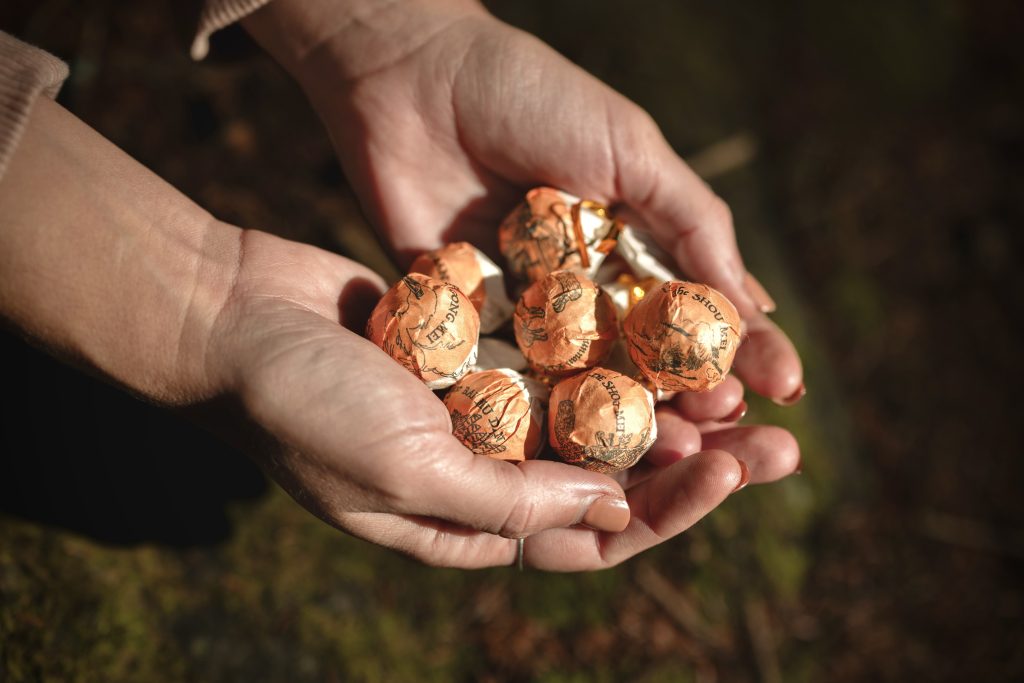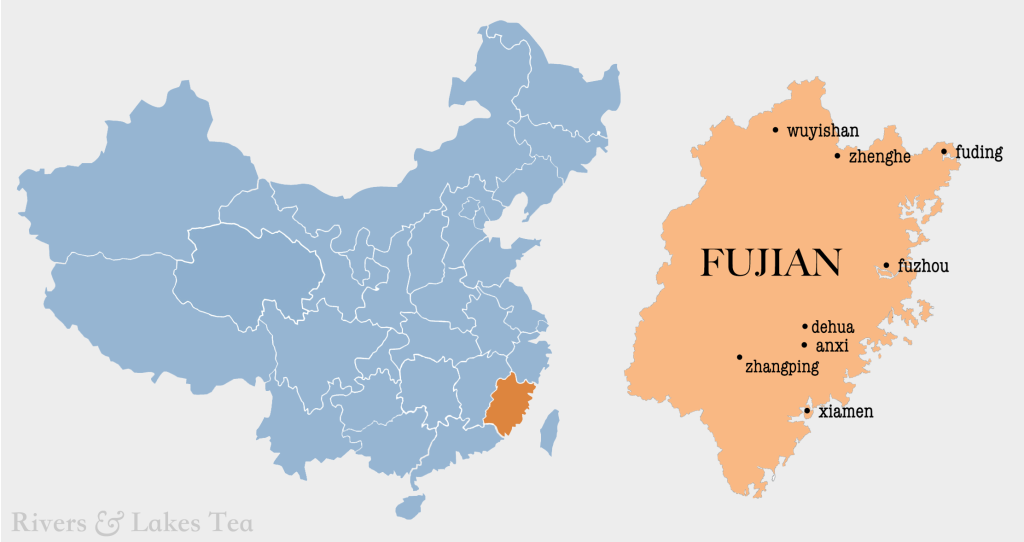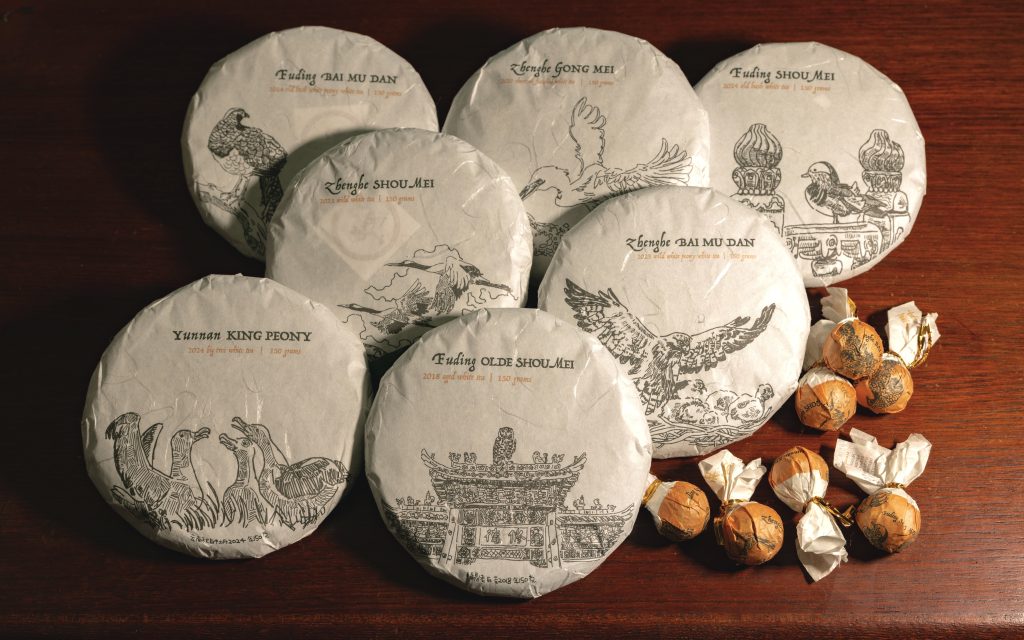$13.00
A tale of two rivals.
The slow-festering of years of tensions finally allowed to bleed out; a battle of the bai cha; a curated altercation; a showdown of the titans of Northern Fujian white tea:
Fuding VS Zhenghe
Opposing forces stationed in their respective arenas — Zhenghe garrisoned in the mountains, Fuding occupying the coast — finally allowed to face off. Like cats on opposite ends of the same neighborhood: cool, appearing aloof, yet calculated and territorial, until one day an incidental rendezvous gives way to a historic skirmish. They've known this day would come.
The winner? You decide.

A tasting set of six 7 gram dragon balls is what's up for grabs — three from Zhenghe, three from Fuding. And hey, we'll throw in the Yunnan King Peony dragon ball just for fun. Here's the roster:
2024 Fuding Old Bush Bai Mu Dan
Though we certainly have our preferences, this competition has to be as fair as possible, so all of the competitors are high quality versions of their types. Not only that, we wanted to bypass the all-too-common cheap conventional plantation style iterations, so each one of these is produced in an ecologically sound way. That is to say that all of these teas have 1 or more of the following qualifiers:
荒野 huang ye "wild" from a reclaimed abandoned garden of now semi-feral heirloom tea plants
老丛 lao shu "old tree" an older overgrown thicket in a diverse ecology they don't spray
生态 shengtai "ecological" an unsprayed tea terrace system kept uncertified organic through natural farming practices

Tea growing areas around Fuding are generally around 400-700 meters, while tea gardens in Zhenghe are between 800-1000 meters. Both of these historic tea growing regions can make reasonable yet ultimately unprovable claims as the original birthplace of white tea (and so can their northern Fujian neighbors Jianyang and Wuyishan).
Histories and myth aside, a distinctly modern surge of interest and investments into white tea over the last 15 years has ushered in more pride, competitive spirit, and advancements in technique. While this movement has been a boon for the culture around the enjoyment and understanding of white tea as well as for general quality control—demand, and with it, prices—for certain types of white have ballooned, causing questionable and outright shady practices to escalate. It seems that with more quality materials and practices being realized, there has never been a more exciting—or riskier—time to enjoy white tea.

Here's a quick breakdown of what we know about these two elite white tea arenas:
Zhenghe: larger leaf varietals grown in the mountains, processed via indirect sun and wind channeled withering earns Zhenghe a distinct sweetness and stronger depth of flavor. This passive solar withering utilizing shade and breeze can take 48-72 hours to complete. Compounded by higher-elevation slow growth and the capacity of its larger leaf varietals' capacity to store more condensed phytoconstituents, Zhenghe white's natural aging can be appreciated as more dynamic, leading to accentuated honey and chestnut aromas. This sweetness is sought-after in Zhenghe whites and displays as a floral fruitiness when young, maturing into dried stone fruit and honeyed tones after some years. Additionally, the relatively low temperature (60-80°C /140-175°F) at which the leaves are baked in its final step may also have a positive effect on age-ability, as more heat would denature the enzymes responsible for oxidation, preventing some of the leaves' transformation.
Fuding, the epicenter for advanced modern white tea production techniques, produces well-manufactured teas with reliable uniformity. Hugging the Northern Fujian coastline where the English once smuggled in opium, Fuding's tea production areas average out at a modest 400-700 meters in elevation. Higher-yielding, quicker-growing, smaller leaf cultivars here can be harvested before rainy season and benefit from sunny weather withering, one of the biggest differences between Fuding and other white tea producing areas. Direct solar withering can be completed in just five hours. This produces teas that are bright, fresh, floral, with lots of immediate charm and character. With baking temps up to 120°C (250°F), Fuding whites are generally finished a bit hotter than Zhenghe's, another factor that could positively influence the immediate enjoyment factor while risking depth of transformation during its aging process. Could this be the reason why new techniques to artificially age white tea were invented here?
A deeper dive into the politics behind white tea's popularity surge as well as our personal take on this battle royale coming soon.
Who won for you? Leave us your thoughts and impressions below in the meantime ↓
fun and tasty experience! the slight nuances or not so subtle differences become east to notice in side to side tasting. I have chosen a favourite in two out of three pairs of mighty competitors included in this set. Looking forward to taste rival king peonies!
I look forward to exploring these little golden treasures.
This is a fun set! Here's the verdict:
Shou Meis: These were great. Fuding is more creamy and a bit greener, while Zhenghe had more spice and foresty notes. You could really taste the "wildness" of the Zhenghe tea, and I felt like it was more complex, so Zhenghe wins the Shou Mei battle.
Bai Mu Dans: I'm not the biggest Bai Mu Dan person, but these were solid. Zhenghe again felt more complex to me and wins this category too.
Fuding Olde Shou Mei vs Zhenghe Gong Mei: This isn't really an apples to apples comparison because the teas aren't really the same plucking grade and are three years apart in age, but as they odd ones out they get compared to each other. I tend to prefer white teas with more age, and sure enough, these were my two favorites in the tasting. Fuding brought the oxidized sweetness that I love, while Zhenghe retained a wild foresty moss character. Fuding wins this category, but that could just be the extra age under its belt.
Dá É's Moonlight White was great too! She never fails to deliver.
Overall, Zhenghe wins 2/3 of the head-to-head battles, but Fuding produced my overall favorite of these teas. Stalemate?